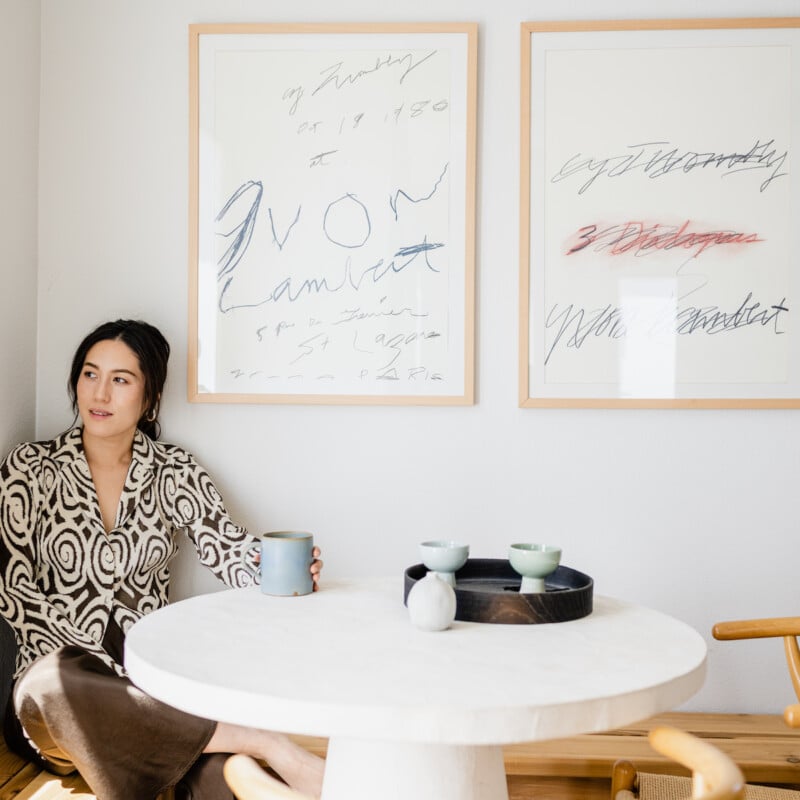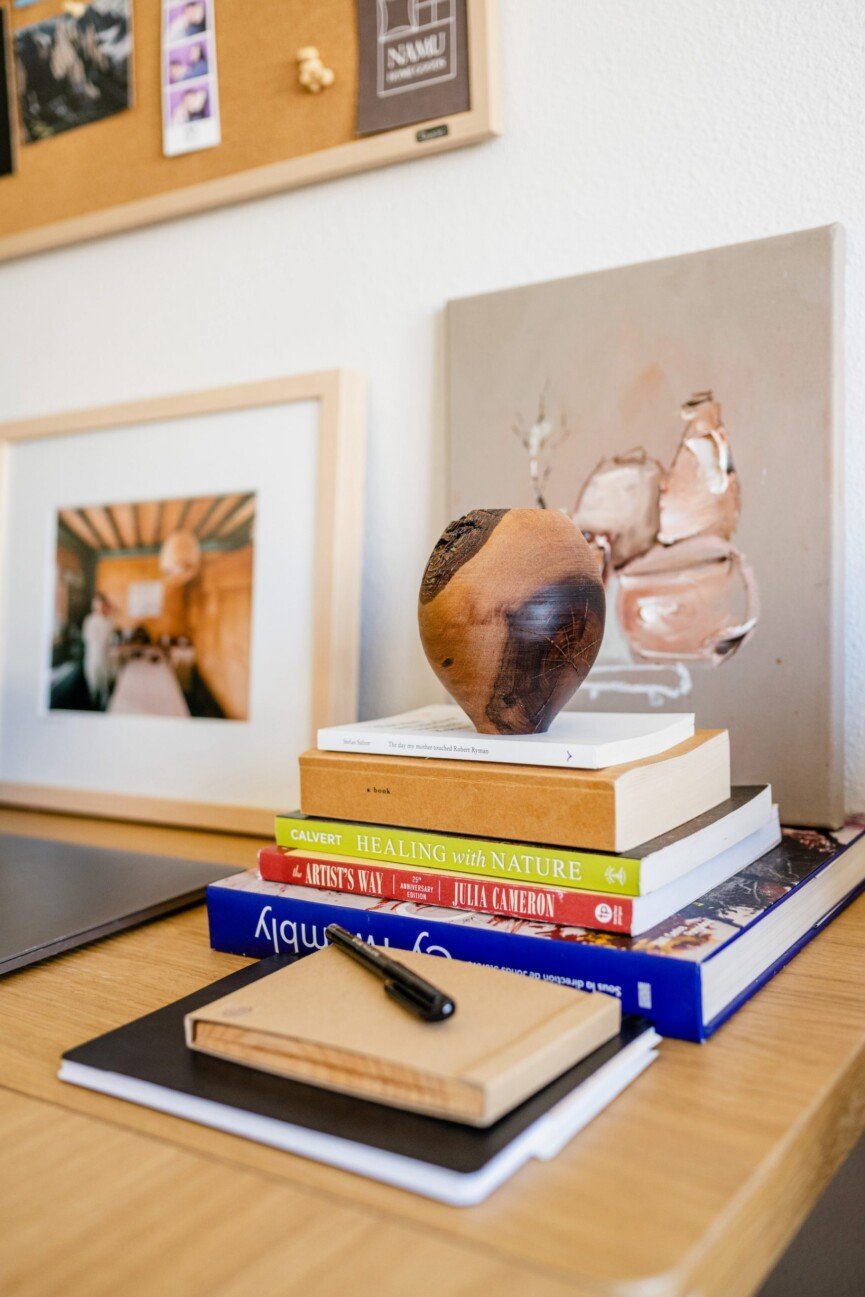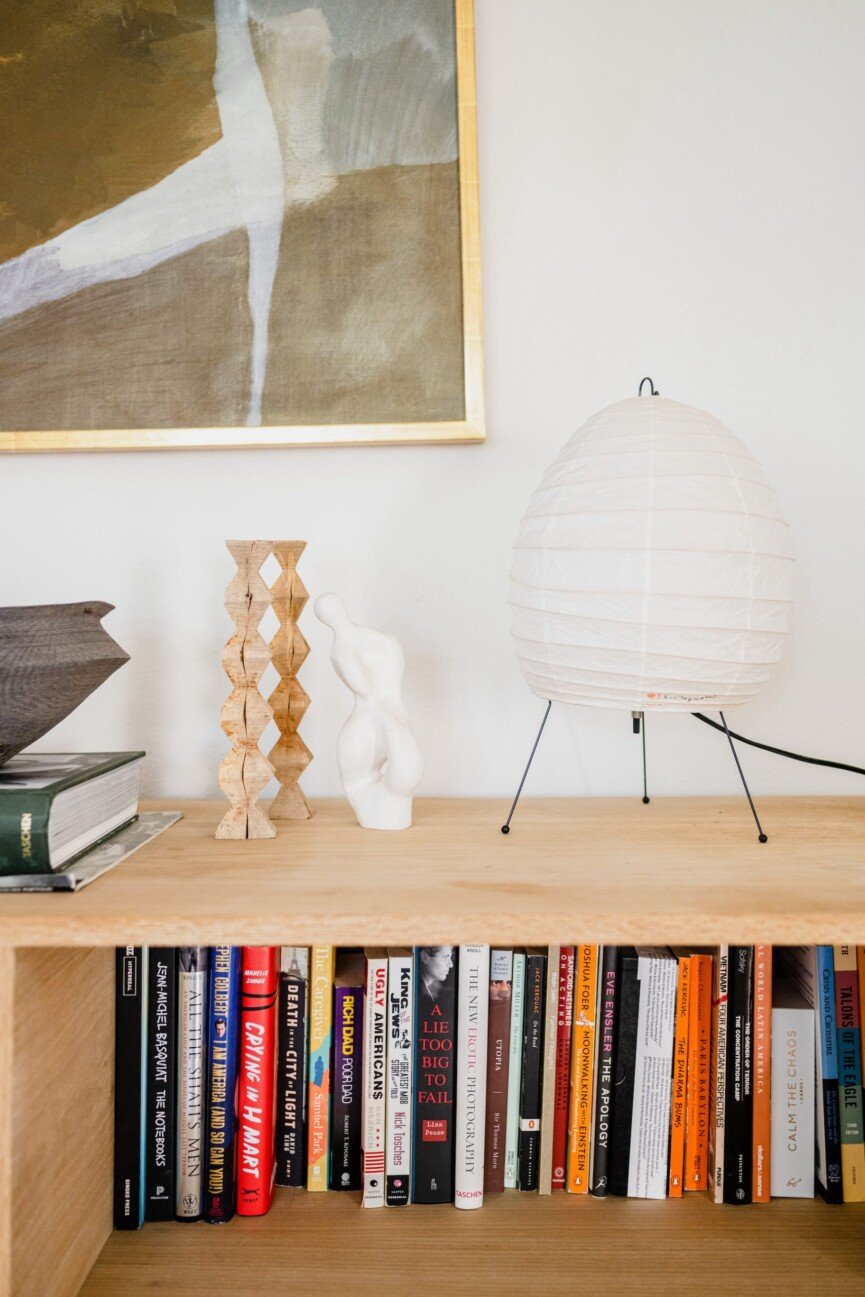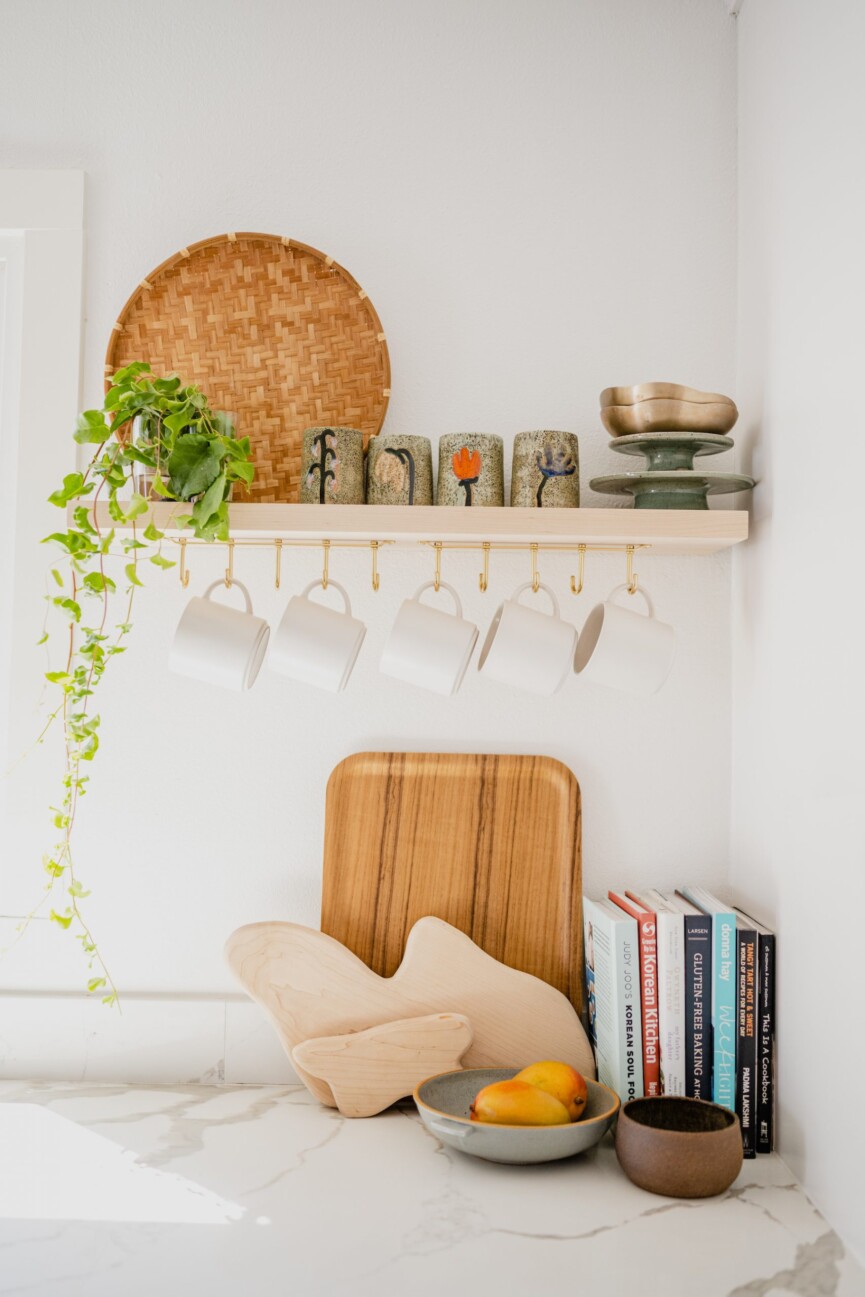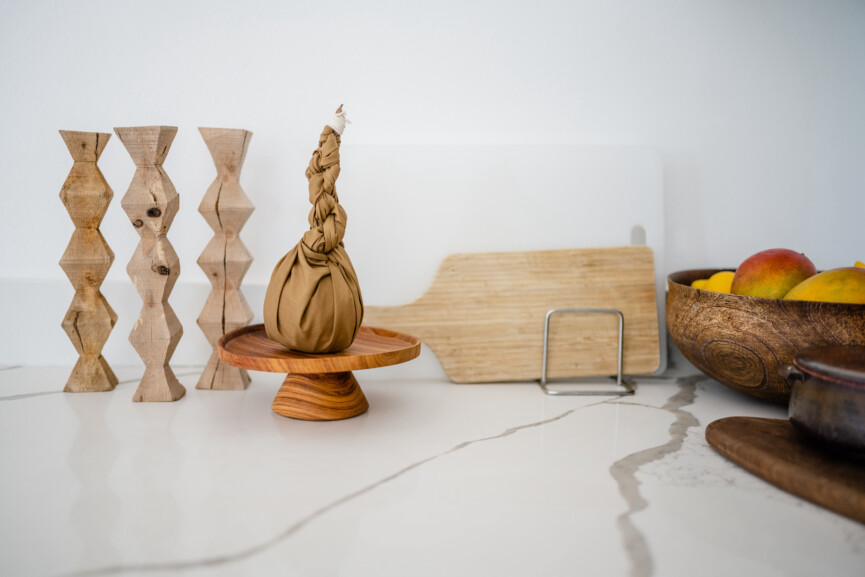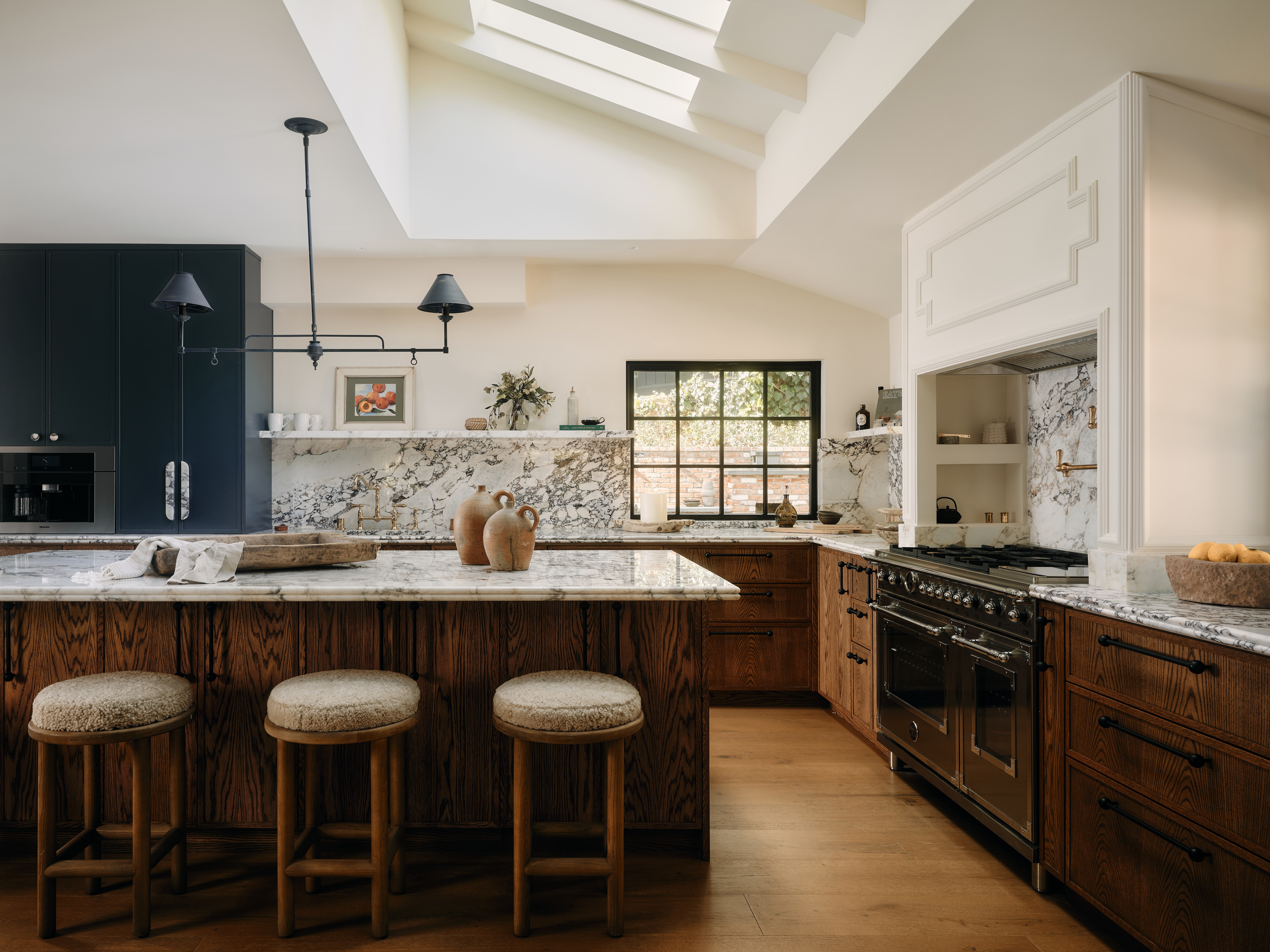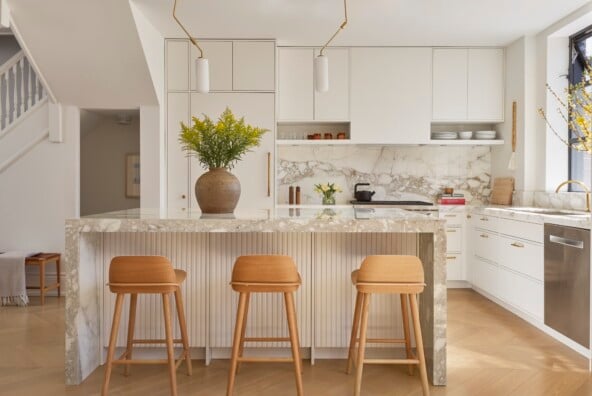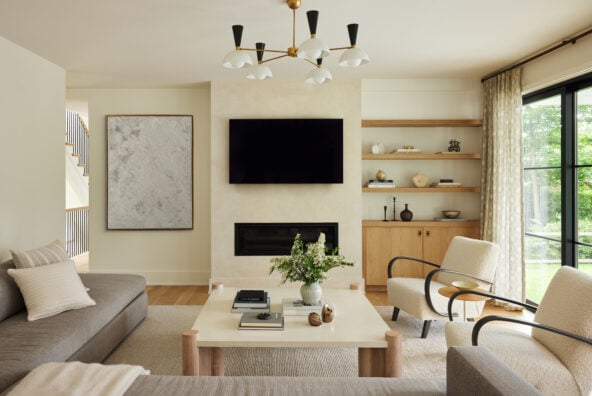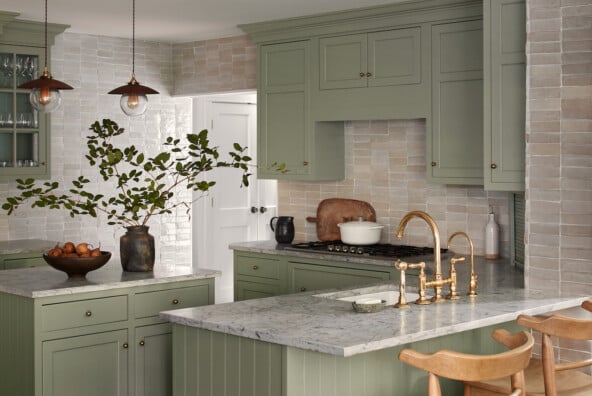A home isn’t just a place to live but a journey into the self. Our residences become a series of vivid moments of what we’ve learned, how we’ve grown, and who we’ve become. In many instances, the places we spend our lives become enmeshed with our dreams and values. This is evident in the Los Angeles home of Namu Home Goods founder, Diana Ryu and her husband, Joseph Lee.
Ryu’s first encounter with her house was kismet. She and Lee spent about six months “going to open houses every single weekend,” fending off the blues of being outbid over and over. When they came across this 1927 three-bedroom bungalow along a leafy street in LA’s El Sereno neighborhood, the pillars they were seeking aligned: There was an art studio in the backyard, perfect for Lee, an artist and actor, to create. A majestic 100-year-old oak tree. And views and light that Ryu says are “incredible.”
All felt right—except for the obstacles that accompany buying a home. The house needed serious work. “Everything had to be replaced after we moved in,” says Ryu. The couple was, yet again, nervous about their offer (the third backup bid for this house). As things progressed, Ryu looked to energy healer Caitlin Marino for guidance. When Marino pulled the word “harvest” from her deck, Ryu took it as a sign.
Below, Diana Ryu reflects on the organic beauty and calming presence of her Los Angeles home.
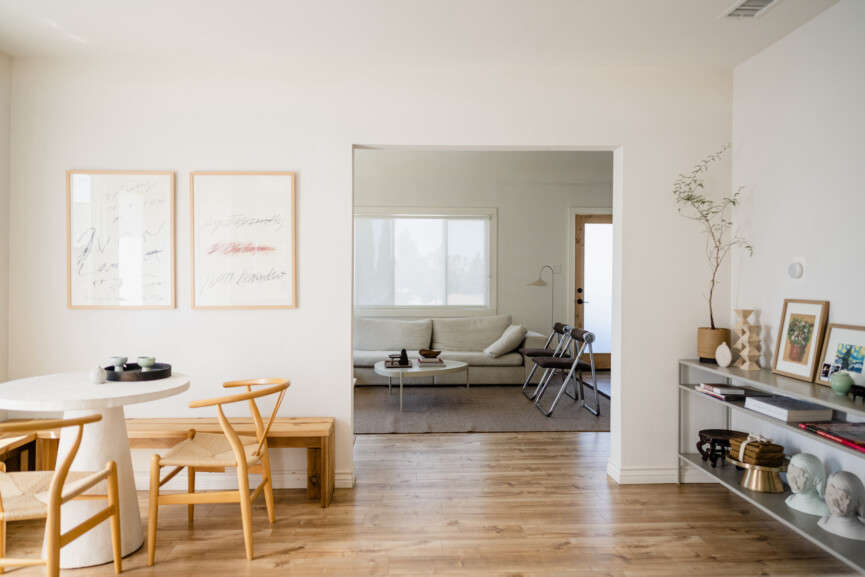
“She said there would be immense joy and harvest in this house, so we felt confident to move forward,” remembers Ryu, who says she and Lee named their home The Harvest House.
That sense of growth imbues the overall ethos of the house. A swath of creamy whites and minimalist décor, punctuated by vintage finds and art, the home is anchored by layers of wood, a material dear to Ryu. It was in the Harvest House where she founded Namu, a collection of heritage wordwork home items sourced from Korea.
When Ryu, who was a longtime editor and writer, looked at the 100-year-old tree in her backyard, she gleaned strength to spawn her business. “The tree has seen countless winters and tragically loses its leaves every year,” she says. “But no matter how cold the winter, it knows spring will come.”
We visited Ryu to see how she weaved that tenacity into their home. Her design wisdom is a lesson on choosing pieces that speak to the soul. After all, we design our homes for the same reason we travel and read: to remind ourselves of the possibility that exists both within ourselves and the world.
Images by Michelle Nash.
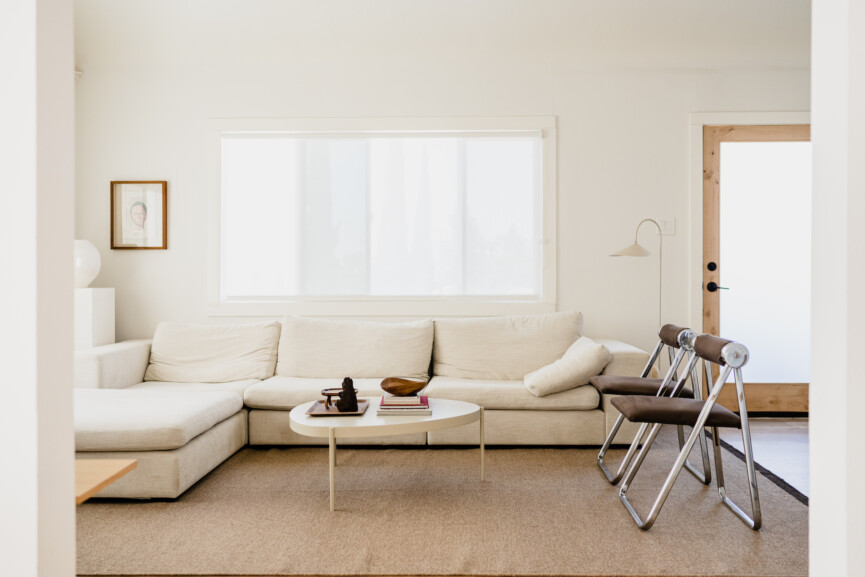
What was your goal when decorating your home?
We want it to feel like an exhale when you walk in. We use a lot of wood or wood tones to warm up our white house. There was a study done in Japan about materials used for homes. Wood was the only material that helped lower blood pressure, so we try to curate a lot of it. The goal was—and is—to have a space that feels calming. We both spend so much of our time working and living at The Harvest House, and it’s been a beautiful and stable constant even while our lives have shifted dramatically.
How do you describe your home’s aesthetic?
There’s a lot of Asian influence. Most of the art in our home is from Asian or Asian diasporic artists, including my husband, my aunt, and our friends. We’re lucky to have very creative people in our lives. We’d like to think our home is conducive to creativity and it feels inviting and calming.
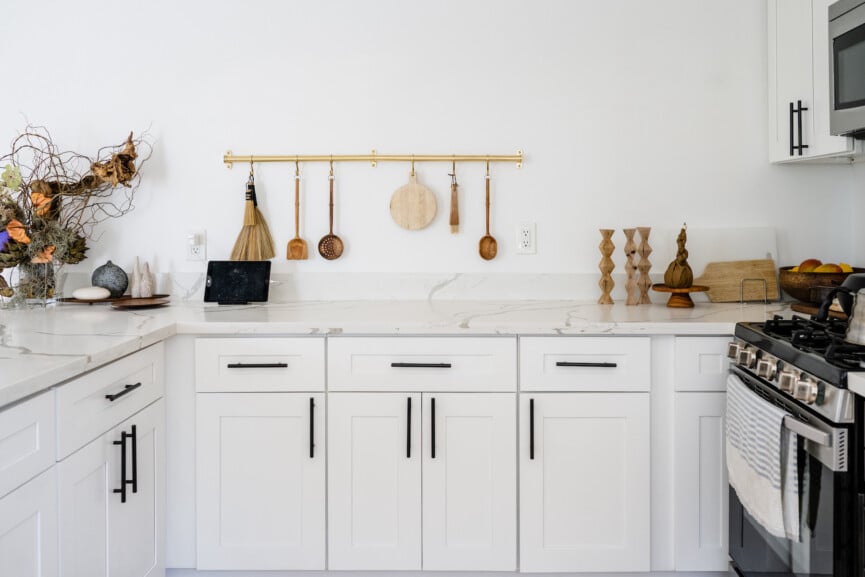
What decorating wisdom has helped you along the way?
It’s OK to shop wherever you have access. Our homes—and our lives—don’t need to be perfect. Homes should be functional for us and our families. Namu Home Goods’ ethos is based on finding the value and beauty in imperfection. Our house isn’t perfect, and it probably won’t ever be. We want to see friends and family be comfortable and feel relaxed enough to lay down on the couch.
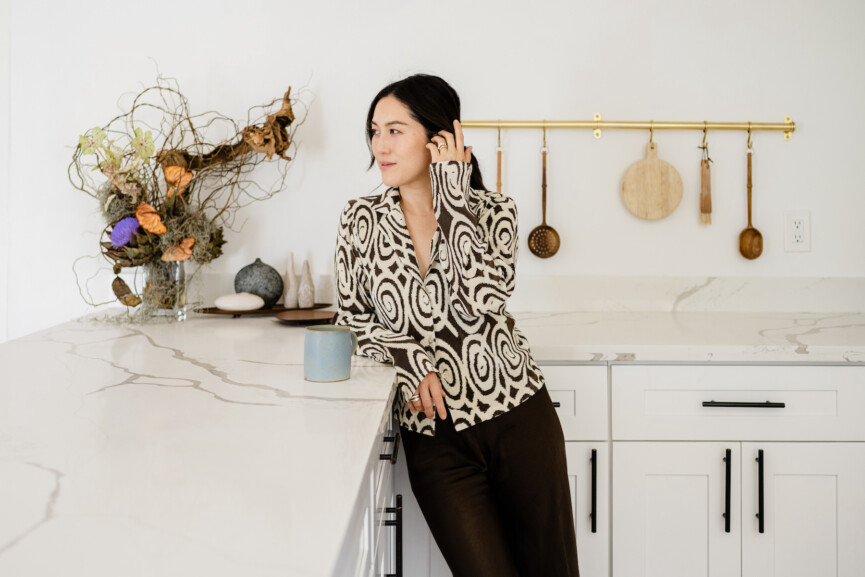
“I have always been drawn to wood as home décor—I think because I’m a highly sensitive person and my surroundings impact my mood.”
How has building Namu Home Goods impacted your approach to design and life?
We try to live simply. We’ve adopted this philosophy from our Namu artists in Korea. I remember for one meeting, we met a Namu Home Goods woodworker who gave us each a single candied walnut with some coffee. My American mind is so used to abundance and overstuffing that I was like, that’s it? But, it made me so, so enjoy and savor the one walnut I did have. It’s an extreme example (I probably could’ve eaten a whole bag, they were so good), but it taught me something about enjoying just what’s in front of me.
What role did color play in your decorating process?
These days I’m really obsessed with Namu Home Goods Umber, one of our brand colors. I acquired these amazing vintage Italian barrel back chairs by Giancarlo Piretti and our Nordic Knots rug in Umber as well. I’ve become an extension of the Namu Home Goods brand at the moment. I’m living it in every aspect! The majority of color comes from our art and books. We’re not opposed to color at all, but just happen to feel close to wood and nature and that happens to be represented in our house.
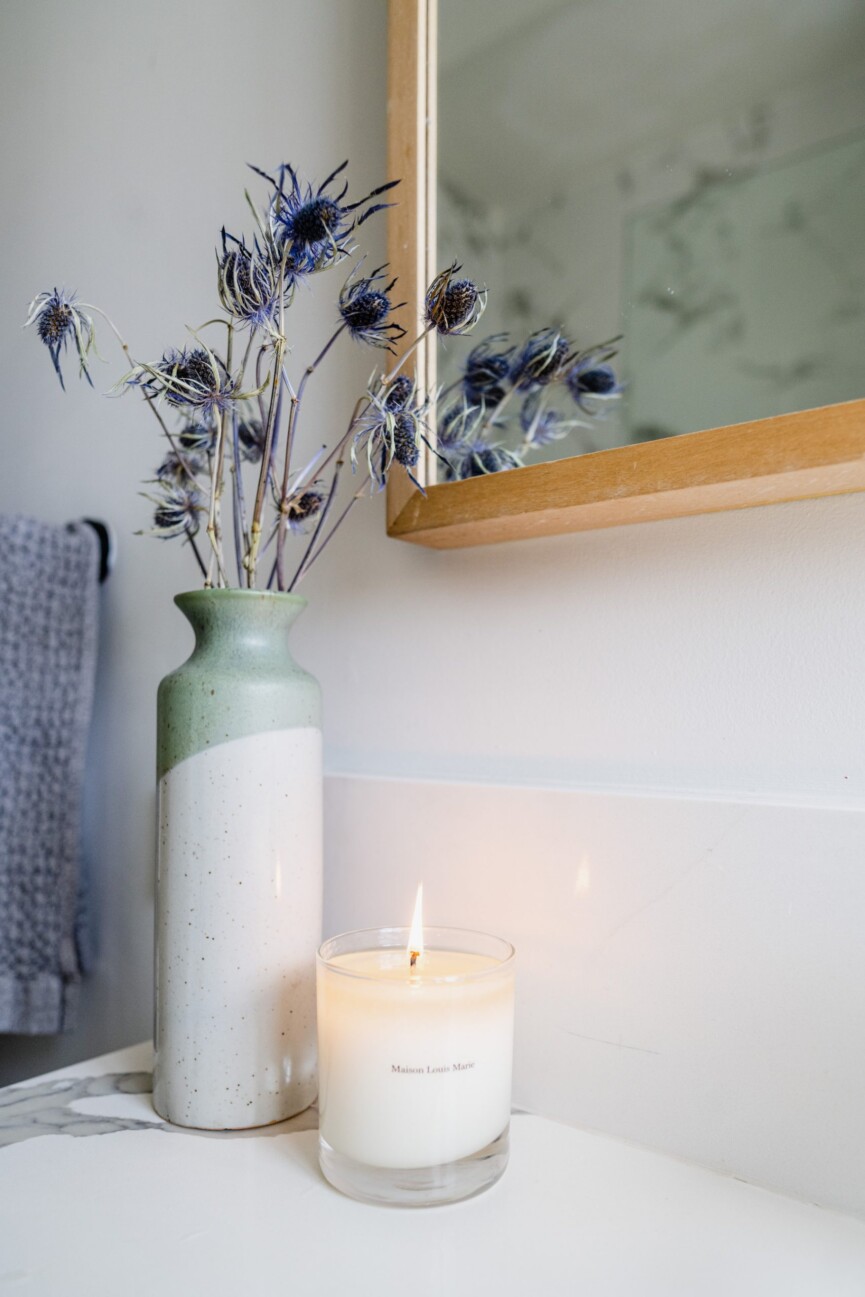
Do you have a favorite design feature or room?
We spend the most time in our living room, dining nook, art studio, and backyard. Just based on that alone, I’d say those are our favorite spaces.
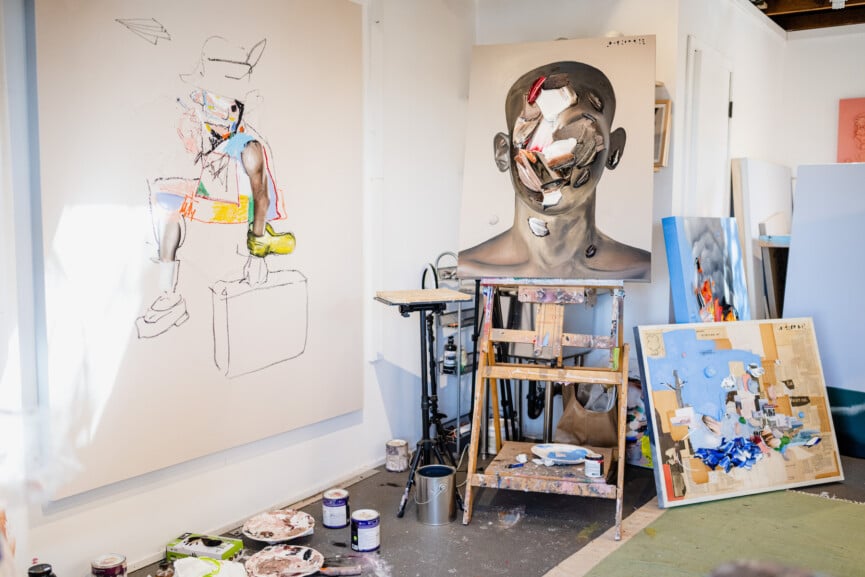
The art studio has great energy. Joe will paint or work on lines and I will work or read on our daybed and we’ll absorb all the wisdom of our oak tree. We like our living room because it gets great light and we don’t have a TV in the house; we use a projector and have subscriptions to our streaming sites, we’re not off-grid. In the daytime our house is quiet. We play music and listen to the birds chirping.
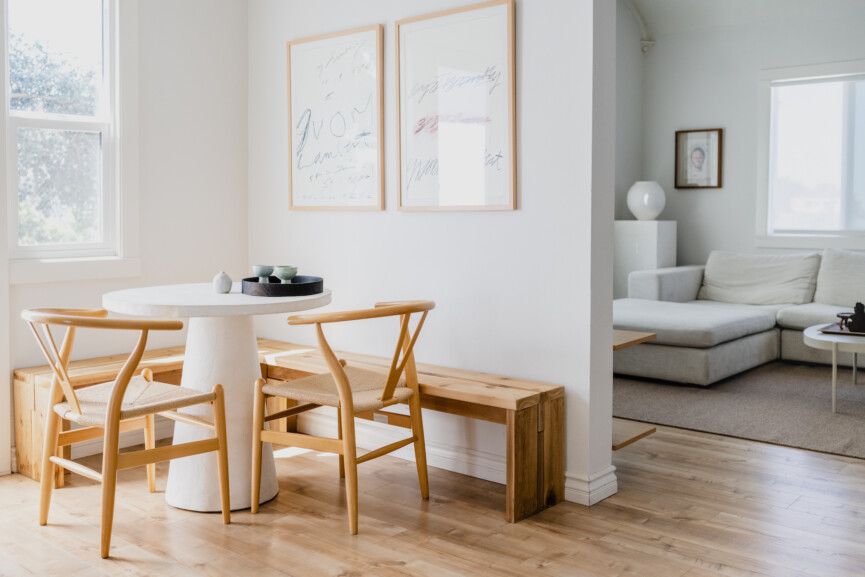
Our dining nook is special because the Cy Twombly prints were a gift. I bought one for Joe and he bought one for me and we exchanged them without knowing the other got the same thing. It was very funny and I’m glad we got different ones at least.
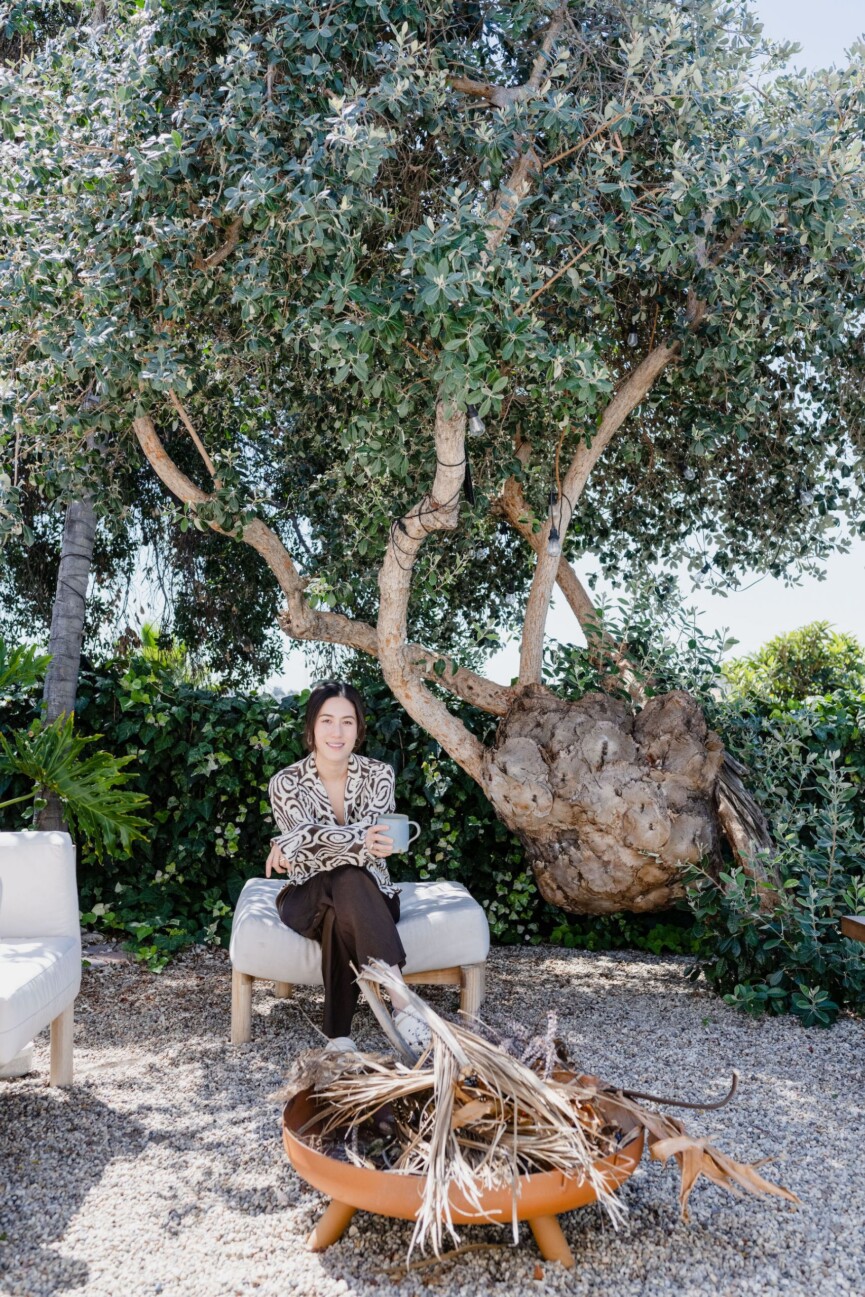
Our backyard has the most incredible views of the hills and we get a nice hilltop breeze. I think our home must have been the only house in our neighborhood for decades. Our home was built in 1927, but every other house on our block was built in the ‘80s and ‘90s.
It must have been a quiet existence for a long time.

